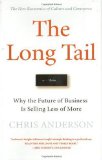Virtual Events – New Opportunity for Public Relations
Note: This has been cross-posted on my previous former employer’s company’s blog, which . Furthermore, my company offers virtual events solutions.
Over the past year, virtual events (e.g. virtual conference, virtual tradeshow, etc.) have gained in popularity due to the economic recession and budget restrictions. As more conferences consider a virtual companion to a physical conference or even going virtual all together, this represents a new arena for public relations professionals:
- – No longer can you stand outside the press room and grab journalists for an impromptu interview
- – You don’t have to walk or run a mile to get from one meeting to another with your client close behind
- – What? – no late night cocktails with the reporter listening to a band from the 80’s?
How Public Relations Can Take Advantage of a Virtual Event
All kidding aside, I think this is something that will become more commonplace. Here are my recommendations the next time your client attends an event with a virtual component:
* Staff the Booth: In a virtual world, there are no limitations on the number of booth staff. Your team can now staff a virtual booth alongside your customer. You will get to read what customers and prospects are seeking, which will make you more informed about your customer’s business. When a media or analyst comes to the booth, you would be the go-to person.
* Include Media-Ready Content in the Booth: Depending on the virtual event, the client will have 3-5 tabs for content. Recommend that one tab includes information that would be valuable to press and analysts, such as fact sheets, company backgrounder, link to the corporate blog, link to your online newsroom, and other resources.
* Participate in the Networking Lounge and Auditorium Chats: Most of the participants are in these two locations. Participate in these discussions as reporters may be asking questions of attendees, seeking resources, or participating in a subject-matter discussion. If the topic discusses your company or product, consider inviting the reporter to a private chat or to come by the booth to learn more. As everything, just make sure to be relevant to the reporter.
* Hold a “Virtual Press Conference” in Your Booth: Like a physical event, you can schedule time to have a “virtual press conference” for an announcement and Q&A with your executives. The benefit is that you can potentially drive more participants as there are not travel requirements. The Q&A would take place via the group chat, recognizing that this is visible to everyone. And remember, this takes the same amount of preparation as a normal press conference!
* Invite Press/Analyst to the Virtual Event: Virtual conference and tradeshows are fairly uncommon. If this is one of the first events in your industry, then press and analysts may be curious to learn more. Take this opportunity to invite them to the virtual event and discuss why your company is participating in the virtual trade show. Just be aware that registration is required to attend. Since most of this is free, consider setting up email aliases, e.g. [email protected], to manage reminders directly with the reporter. Otherwise, have the reporter sign up directly.
Conclusions
In the end, a virtual conference or trade show represents an opportunity for public relations. I’ve heard of a few instances where press and analysts have been invited to invitation-only events online, I do anticipate this to increase as larger, more public conferences consider virtual components. When this happens, will you be prepared?
Sometimes "Sorry" Is the Best PR
My apologies – this was a guest post by Alli Gerkman when I was on vacation. I didn’t realize that I had to approve this, so here’s the missing guest post:
So, I’m sitting here in a hotel room in Sacramento, one day into a two-day conference. I’d been thinking about what to write since last week when Cece asked me to guest post, but after the day I’ve had, I’m changing direction. That’s the funny thing about blogging. You never know where it’s going to take you.
I’m in Sacramento because I organize and run legal conferences around the country-about 24 each year. Usually, things go seamlessly (or almost seamlessly-it’s hard to imagine a completely error-free event). Occasionally, things don’t. Today was one of those days.
Each mistake, on its own, is relatively innocuous. The conference room is moved and is difficult to find. But people find it and life goes on.
We notice the printer left a section out of the materials. Okay. We can get Kinkos to deliver the missing section within hours.
But then the computer dies mid-presentation, forcing a speaker to finish without PowerPoint. Now people are starting to think, “What is going on here?”
Indeed.
I take these mistakes pretty seriously. The speakers I line up for my conferences are leaders in their fields and the attendees have given us tuition and entrusted us with two full days of their valuable time, so I don’t like to disappoint.
That said, most mistakes are out of my personal control. I could get bogged down in explaining that: “See, after I do the final edits on the materials, it goes to our printer who prints and ships the book. That missing section was there when I reviewed it, but I don’t have another review between when the finals are printed and when they are shipped to the hotel, so there was nothing I could do other than get Kinkos to print the section and send it over.”
But does anyone want to hear that? Did you even want to read it just now? Does it help address the situation in any way? Probably not. So instead, I say, “I’m sorry.”
And I mean it.
Of course, I can’t stop there. “Sorry” doesn’t mean I’m off the hook-it means I’m working harder than ever to get things back on track. But it’s a start to building a stronger relationship with our speakers and attendees. Believe it or not, some of my best evaluations have come from conferences that couldn’t catch a break. After all, it’s easy to represent your company or your brand when everything is going right, but it’s how you react when things go wrong that can set you apart.
Tomorrow is day two and I think we’re in good shape, but wish me luck.
Video Response to "Open Letter to PR Agencies"
I had an interesting conversation with Steve Gershik who writes Innovative Marketer the other day. We discussed his recent post, “An open letter to PR agencies…” which highlighted some of his frustrations over a recent PR agency search. For me, I come from the PR agency background. I truly support PR and want to see PR agencies succeed. But unfortunately, since going in-house, I have to agree with Steve’s points.
Be Honest
In the end, I want a successful partnership (stress partnership here). But in order to do this, you need to be honest with me regarding your workloads and what is truly possible. This way, we can set the right expectations for success. Which leads me to
Referrals are key…
In this economy, referrals are worth their weight in gold. The expectations are higher when you’re referred by a person I trust or I’ve worked with you in the past. But don’t waste this opportunity. If you do poorly in front of my executives, it looks bad for you, me and the person who referred you. In the end, I’ll never refer you again. So bring in your A game and do 150% if you’re referred to me. But one word of caution
Respect My Process
People like Steve and I are managing entire marketing programs. For me, I cannot manage the vetting process from beginning to end so I work with my colleagues to help me in the process. Don’t try to circumvent that process by trying to reach me directly. In fact, you may lose the business as a result. And for PR agencies, would you go around a reporter to the editor becuase you thought the reporter was too slow? I guess it depends but you would think twice before doing that becuase of the remifications, right?
What do you think? Are there any other points to consider?
Measuring The Cost of Bad or Good Online Reputation
I received this question from Nathalie Seoteman after she read my free ebook on using social media:
How [can you] calculate the value of a company’s online reputation and (marketing) PR 2.0 efforts? What did these activities produce, put in figures and – preferably – in euro’s/dollars? I would like to include both the reputation damage that has been diverted and the positive/negative/neutral online coverage that has been created.
This raises an interesting and very complex question. There will inevitably be tangible and intangible ways to measure the value.
Measuring Positive and Negative Reactions
Assuming that you’re using a tool like Trackur, Radian6 or just Google alerts to track your coverage, the first thing you have to segment the coverage by what Radian6 calls sentiment – negative, neutral or positive. Once you’ve done this for media coverage, video responses, Twitter responses, blogs postings and more, you can get a visual representation of the sentiment over time.
The question then is how do you assign a monetary value to this. One way is to use ad equivalence, which is how much would it have cost you to advertise in a magazine for the same space. The obvious drawback is that this will not cover a significant portion of your coverage and you have to do the time consuming research to find the ad values. But let’s assume that this works for 40% of the videos, blogs and media coverage out there. How do you measure the remaining 60%?
The Value of a Single Customer Won or Lost
I am assuming that you have a sense of your sales pipeline and what the average deal size (let’s keep this simple, ok? =). If you delved into the content of what is being said, how many would say they would 1) hire your company; 2) never work with your company again or 3) are neutral.
I’m making a huge assumption that each person is a potential customer regardless of their company affiliation and title. For example, there are over 589,000 fans on the Skittles Facebook page. If I assumed that each person bought at least one Skittles product that cost $0.75, then the potential value would be $448,500.
You can then do the same with your business: positive = gain average deal size, neutral = zero, negative = costs you average deal size
Conclusions: Not an Exact Science, Yet
I admit that I am ignoring the relative influence and weight of differing outlets, people or prominence of coverage. I also know that not everything can be easily dissected into the three sentiments I highlighted above. But frankly, I didn’t want to turn this posting into an essay ?
While technology is catching up to help automate the process, I believe that there is still a very manual process involved to evaluate the coverage, put it into the appropriate bucket and then assign a value to it. Hence, I recommend that you start simply – take the most simple measurement and build upon it over time. Otherwise, you may find yourself spending more time assembling reports about your online reputation versus managing it directly.
In the end, there is no right answer for measuring the value of bad or good online reputation management. I hope the above provides a starting point for those seeking to calculate this value.
I would love to hear of how others would go about calculating the value of bad and good online reputation.
The “formulas”
Positive Ad Equivalence – Negative Ad equivalence = Total Ad Equivalence
Potential Customer Deal Won – Potential Customer Deal Lost = Value of Potential Customer Deal
Total Ad Equivalence + Potential Customer Deal = Total Value of Positive/Negative Online Reputation
The Value of LinkedIn Answers?
Social networking sites are extremely popular, receiving a lot of attention in the press. From my perspective, LinkedIn is different from other social networking sites, such as Facebook, MySpace or Reunion (disclosure: my good friend works at Reunion), in that the purpose is busines related. There are other bloggers who have focused on how to measure social media, most notably KD Paine’s PR Measurement Blog. My goal is to specifically look at how LinkedIn Answers can provide measureable impact, especially from a business-to-business perspective.
In terms of measuring the impact of participating – this is where coordinating with your marketing department will be key.
1. How many people were referred to your site from LinkedIn?
2. Did an incoming sales prospect reference the site?
3. If you included links to a page on your site, how many clicks did it get from LinkedIn?
4. And if you decide to include your contact info, did someone contact you as a result of the contact info?
And of course, it’s a great way to get your “community” to help with research , such as services, resources, and other expertise.
I would love to hear if anyone experienced direct benefit from LinkedIn.
Social Tagging – PR or Marketing?
Tom Pick, B2B marketing expert and author of The WebMarketCentral Blog, wrote a great series of posts about social tagging. I’ve included links to his comprehensive look at how social tagging can help drive B2B traffic below. Instead of repeating Tom’s excellent work, my question is who’s responsible for social tagging – PR or Marketing?
I guess it depends on the resources of your client. For a company with a full marketing department, this work may fall to the person responsibel for search engine optimization/search engine marketing (SEO/SEM). This person is responsible for establishing programs that drive the organic traffic to your website.
From my perspective, social tagging should also fall on this person’s plate. If a company doesn’t have someone focusing on SEO/SEM, then this is a possible opportunity for PR. Like all PR, social tagging must be done strategically and methodically. And from Tom’s work, valuated over a period of 2 – 3 months. Couple of things that come to mind:
1. Track what you’re tagging and to map out the timeline. Whether you’re working with your client or have access to analytic information, reviewing traffic patterns to these specific pages will be one way to measure the effectiveness of your program.
2. Without understanding the different social tagging sites (at least for now!), let’s assume that other people can also bookmark your links. If this is possible, then consider getting updates with each new bookmark through something like google reader. For example, I get updates each time our website is bookmarked by someone on del.icio.us.
And me? I guess I’ll start with a couple of pages, see what happens and go from there.
Source – Tom Pick’s The WebMarketCentral Blog, Social Tagging Series:
- Part 1: Alexa Rankings
- Part 2: The Worst
- Part 3: Specal-Purpose Sites
- Part 4: B2B Traffic Building
- Part 5: Tier 3 Sites
- Part 6: Tier 2 Sites
UPDATE: I forgot one more: Part 7: The Best
About
Favorite Service
Recent Comments
- on Going Virtual Isn’t Necessarily the Answer to Replacing Your Physical Events
- on Going Virtual Isn’t Necessarily the Answer to Replacing Your Physical Events
- on Going Virtual Isn’t Necessarily the Answer to Replacing Your Physical Events
- on Going Virtual Isn’t Necessarily the Answer to Replacing Your Physical Events
- on Going Virtual Isn’t Necessarily the Answer to Replacing Your Physical Events
Ads by Google
Favorite Books
Marketing Blogs
PR Blogs
- KD Paine's Measurement Blog
- Micro Persuasion
Virtual Events & Meetings Blogs
- Cisco Virtual Environments
- It's All Virtual
- The Webinar Blog
- Virtual Edge Institute

 Follow
Follow

 Cece Salomon-Lee is director of product marketing for Lanyon Solutions, Inc. and author of PR Meets Marketing, which explores the intersection of public relations, marketing, and social media.
Cece Salomon-Lee is director of product marketing for Lanyon Solutions, Inc. and author of PR Meets Marketing, which explores the intersection of public relations, marketing, and social media. 


